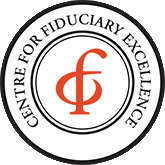
Investment Manager Certification Mark
Traditional investment analysis focuses upon Investment Managers, the strategies they employ and the returns they produce compared against market data. Little analysis is undertaken regarding factors such as conflicts of interest; corrupt practices; undisclosed and excessive compensation arrangements; misrepresentation and the impact upon performance.
All too often what's good for the Investment Manager is not good for the clients. For example, growing assets under management is great for Managers who are paid an asset-based fee; on the other hand, growing assets under management rarely improves performance.
Why is fiduciary excellence so important? Because lack of it in an investment program can both undermine investment performance and be predictive of poor performance. Future bad performance can be predicted by identifying deficiencies in fiduciary practice.
Currently, 24 Fiduciary Practices have been identified which define a standard of excellence for Investment Managers. The CEFEX Fiduciary Practices are based on guidelines proposed by industry organizations such as the CFA Institute, the European Fund Asset Management Association (EFAMA) and the World Risk Standards Working Group.
 Please click here to download Prudent Practices for Investment Managers
Please click here to download Prudent Practices for Investment Managers
Each fiduciary practice has criteria to determine conformity to the practice. Since asset managers will have varying implementations of fiduciary practices, the criteria span a broad range. Each criterion is assessed using quantitative measures of adherence to a practice. For example, Practices 3.5 and 4.2, best execution in trading and trade monitoring, contain criteria from the broker selection and trading process, to the monitoring and allocation policies. The assessment of these criteria will include a query on failed trades over a set time period. Another example is in Practice 1.5 where business continuity through reliable IT systems and risk management is addressed. The assessment will query whether back-up facilities and recovery programs are coordinated with the firm's reporting obligations.
Scrutinizing the fiduciary practices of an Investment Managers is challenging. Even today, post Madoff, few investors investigate or monitor their Investment Managers. Even when faced with dramatic losses, most investors choose to accept the reassurances of their advisers that their losses were caused by unforeseeable market forces, not actionable wrongdoing. CEFEX certification allows for a deeper verification of the Investment Manager, thereby increasing trust for both the advisor and investor.
The Prudent Practices for Investment Managers cover 4 major areas:
Investment Managers can determine their readiness for a certification assessment by performing a "Self Assessment of Fiduciary Excellence: SAFE". Please download the SAFE below.
 Self-Assessment of Fiduciary Excellence for Investment Managers
Self-Assessment of Fiduciary Excellence for Investment Managers
Hedge Funds
While the assessment of hedge fund managers is based on the same certification standard as traditional investment managers, it represents an even greater value for investors. Most hedge fund managers work in either an unregulated or poorly regulated environment. They have a tendency to be protective and lack transparency. As such, it is usually unclear what hedge funds actually invest in and the valuations of many of the securities held in fund portfolios are questionable.
Much of the publicly available performance data has been crafted to promote hedge fund investing. Various organizations purport to publish monthly reports regarding the performance of hedge funds, but generally this data is circumspect. Since most hedge fund performance data lacks timeliness, consistency and oversight, investors need additional verification that their manager is suitable, transparent and applies a consistent approach to fund management and valuations. For hedge funds which report their performance, one must keep in mind that the data is usually not audited.
A CEFEX certification demonstrates that a hedge fund is sufficiently transparent and that it has sustainable and repeatable processes. This is a significant differentiation in an opaque industry.